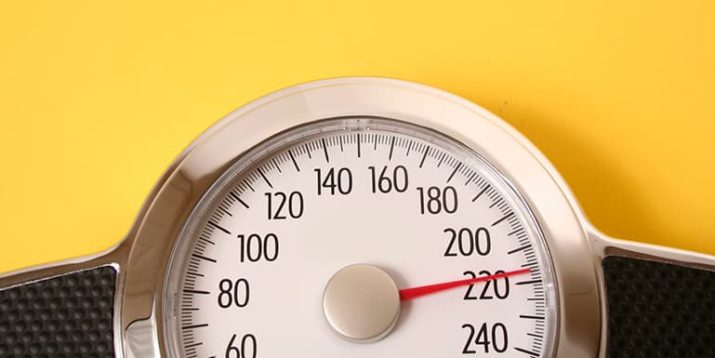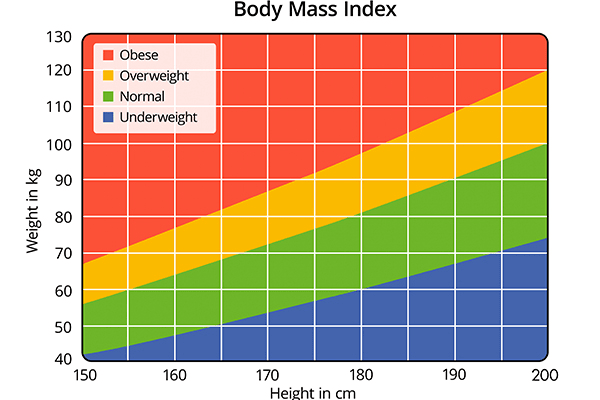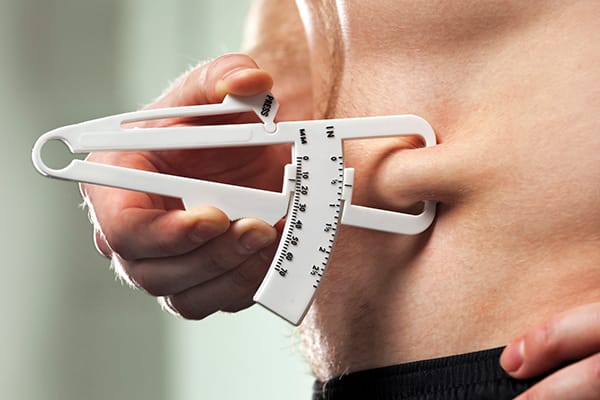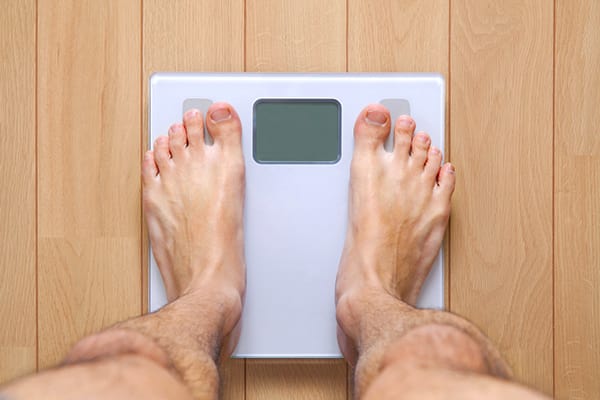Why Body Fat Percentage Matters and How to Measure It

When you first start working out and eating right, those initial gains are usually easy to see. After a while, though, you might see that your weight loss has plateaued or that you’ve actually gained a few pounds. What in the world is going on?!
But before you start doubling down on your workouts and cutting calories, step away from the scale and take a breath. The number on a scale tells only a small part of your body’s story. Find out what role body fat percentage plays in your big picture and why (and how) you measure it.
Body Fat Percentage vs. BMI

While you’re doing a fitness program, your body composition is changing. Knowing the difference between body fat percentage and body mass index (BMI) will help you better understand what’s happening.
“As the name suggests, body fat percentage is an attempt to quantify the percentage of your body composition that’s made up of fat,” explains Dr. Steve Faulkner of Loughborough University’s School of Sport, Exercise and Health Sciences.
Knowing what your body fat percentage is (and the range that you should aim for) can help you set realistic fitness goals and expectations and achieve a healthy body.
Body fat percentage should not be confused with BMI. (Trigger warning — math ahead.) Your BMI is your weight (in kilograms) divided by the square of your height (in meters). But your BMI doesn’t take into account age, gender, muscle mass, bone density, and a host of other physical aspects that can inform your actual percentage of body fat.
“If you take, say, an NFL football team and look at their BMI numbers, a lot of those guys would be in the overweight or obese categories, despite having very low levels of body fat. So BMI has its flaws,” says Faulkner.
Because of those flaws, many scientists and health organizations now recognize that BMI is “not diagnostic of the body fatness or health of an individual.” Instead, it’s viewed as a tool to determine your general weight category (underweight, normal weight, overweight, obesity) and the possible health risks associated with each.
(Fun body-fat fact: The original BMI formula was called the Quetelet Index and conceived of almost 200 years ago by mathematician Adolphe Quetelet. It was later renamed Body Mass Index in the early ’70s.)
How to Measure Body Fat Percentage

1. Bioelectrical Impedance
One of the most common and affordable methods of measuring body-fat percentage is bioelectrical impedance (BIA). Small electrical currents are sent through your body and measured for how quickly they return. The theory is that lean tissue conducts electric pulses far quicker than fatty tissue and so the quicker the impulse returns, the less body fat you have.
The majority of home scales also use this technology, relying on just two electrodes, one under each foot, to take the measurement.
The great thing about bio-impedance technology is that it’s extremely accessible and it requires no prior training to get a readout. However, research suggests that what it offers in ease of use, it can lose in accuracy.
2. Skinfold Measurement
If you can pay more for an in-depth analysis, you could book an appointment with a practitioner of skinfold measurement. “It involves using calipers to take exact measurements of skinfold thicknesses, then applying equations to those measurements that’ll give an accurate estimation of body composition,” says Faulkner.
Technically, you could do this at home with an inexpensive set of skinfold calipers and some Googling, but if you’re aiming for accuracy, you’ll want someone who’s been trained in how to wield them properly.
3. DEXA Scan
If calipers aren’t high-tech enough for you, there are more serious lab-grade methods: Dual-Enery X-Ray Absorptiometry (DEXA) is one. “Here at the university we use DEXA scans, which are similar to an X-ray scans, to determine body composition,” says Faulkner. “For the average person, however, getting access to a DEXA machine may be difficult.” This method is trusted by most university sports science labs, but it’s expensive, so this probably isn’t a practical option unless you’re a serious (or professional) athlete.
4. Underwater Weighing
Also known as hydrostatic weighing, this method compares your body weight while you’re nice and dry with your body weight when you’re fully submerged in water. Clever people then take this information and calculate your overall body density and from that, your body composition. While considered the most accurate measurement, this dunking method also means a visit to a professional and you’ll have to be OK with being completely underwater for a while.
Body Fat Percentage Calculators

While home scales use bioelectrical impedance technology to calculate your body fat. While might not be as accurate as other methods, it’s a cheaper, more convenient option to keep general tabs on your progress. Check these out if you’re in the market:
3. Under Armour Health Box Scale
4. Fitbit Aria
5. iHealth Core
What to Know About Measurements
No matter what machine or method you’re using, it’s important to understand that a number of variables can affect your results. This includes the time of day, whether you’re pre- or post-exercise, how long ago you ate, and your hydration levels. Mixing devices and methods will also give you variable results, so if you’re looking to benchmark your progress, it’s best to use the same method each time.
If you’re using a bioelectrical impedance machine — the most common way to monitor at home — there are things you can do to make sure your results are as standardized as possible.
“Keep the time of day that you take the test the same,” advises Dr Faulkner. “If possible, lie down for five minutes beforehand, and take the measurement lying down. Keep your body’s positioning the same each time. And your hydration levels should always be the same, as this will effect the amount of electrical resistance within your body.”
Is There an Ideal Body Fat Target?
So, let’s talk numbers: What body fat percentage should you be aiming for? As with everything health and fitness, your ideal body fat percentage depends on what you’re hoping to achieve. If you’re a serious athlete, you’re likely aiming to be leaner than someone who just wants to be in general good shape.
While there are no official guidelines on body fat ranges, the American College of Sports Medicine — a widely trusted source in the fitness community — recommends that men aim for 10 to 22 percent body fat, and for women, 20 to 32 percent.
The key to using body fat percentage as a tool is not to aim for a specific number; find a happy balance. “It’s not something the average person on a training program needs to get obsessed over,” says Dr Faulkner. “If you’re on a program purely to shed body fat then it is perhaps something you’ll want to keep track of, but generally you should just aim for a good ratio of body fat to lean muscle mass.”
